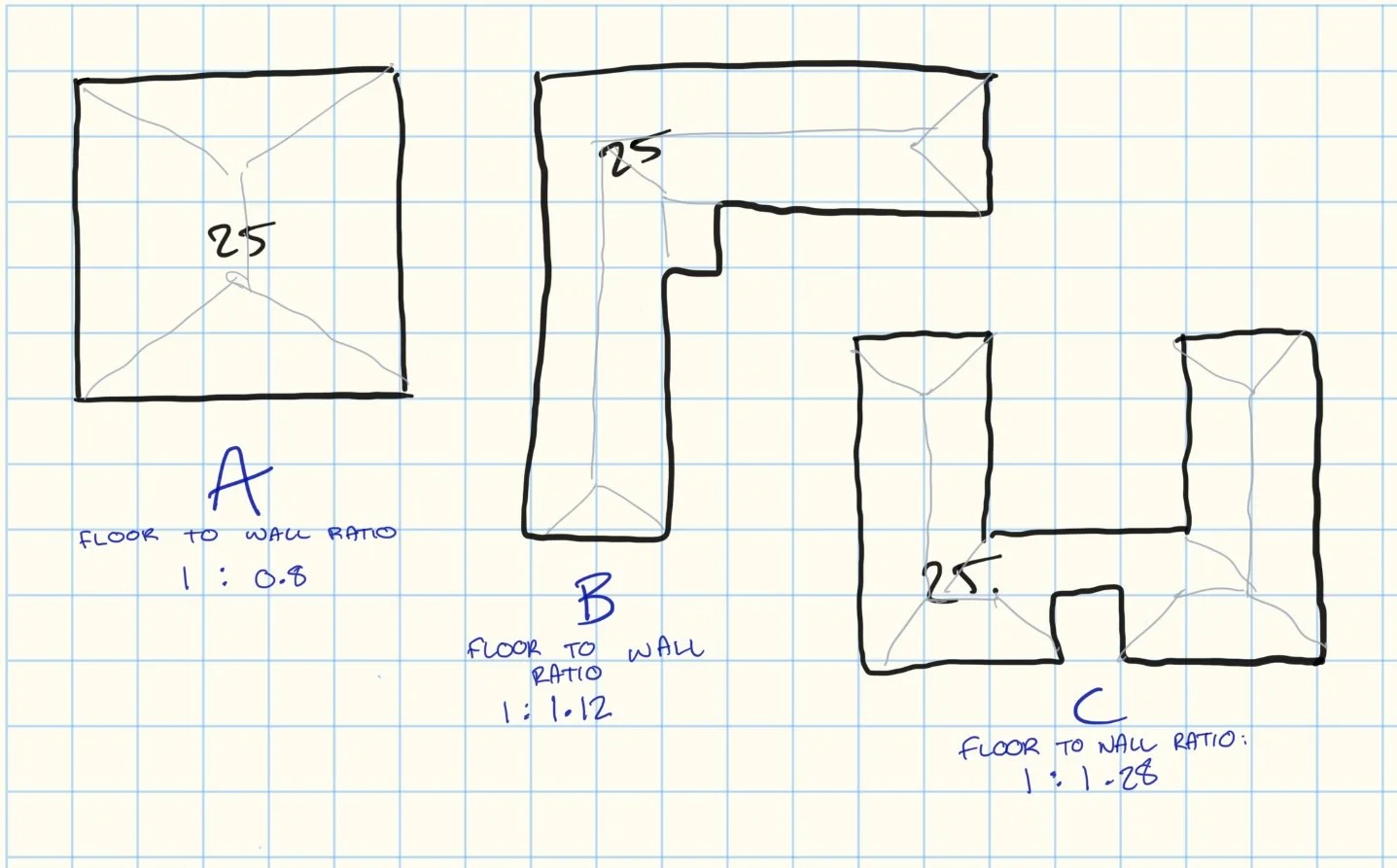The Shape of things
Optimal thermal performance of a dwelling aims to keep the dwelling warm when it is cold outside and cool when it is hot outside.
This is accomplished by maximising solar gain in cool months and minimising solar gain in hot months.
Conductive heat transfer occurs through walls (both external and internal), floors, roofs, glazing and skylights. Controlling energy transfer through a dwelling means controlling the insulating
qualities and/or size of these various elements.
The Shape of a dwelling is a factor here. Dwellings with less external wall area compared to the floor area of the dwelling have a smaller surface area through which energy can be transferred.
Option A, B and C in the above picture all have the same floor area but the shapes give different surface areas of external wall. The wall surface area to floor area ratios. The greater the ratio, the greater the energy transfer, the higher the insulation rating that the construction elements will need to be.
Another interesting thought is, that with more wall area, the more opportunities to include windows, which are not the best at insulating a dwelling.
So, the more irregular the shape, the higher the floor to wall ratio, the more difficult to achieve the 7 star minimum rating, and the more likely a very expensive window will need to be specified.


